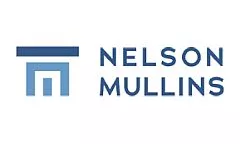- in United States
- within Consumer Protection, Criminal Law and Antitrust/Competition Law topic(s)
- with readers working within the Consumer Industries and Utilities industries
On June 10, 2025, the Committee on Rules of Practice and Procedure — the advisory body to the Judicial Conference of the United States — approved several key amendments to the Federal Rules, including the creation of a new provision: Federal Rule of Evidence 707. This newly adopted rule is designed to address growing concerns around the use of AI-generated evidence, particularly when such evidence functions similarly to expert testimony and raises parallel questions of reliability, bias, error, and interpretability.
At its core, Rule 707 ensures that AI-derived evidence is subject to the same standards of admissibility under Daubert as traditional expert testimony. Specifically, the rule mandates that machine-generated evidence must meet the criteria outlined in Rule 702 when no human expert is testifying to its substance. The rule states:
"When machine-generated evidence is offered without an expert witness and would be subject to Rule 702 if testified to by a witness, the court may admit the evidence only if it satisfies the requirements of Rule 702 (a)-(d). This rule does not apply to the output of simple scientific instruments."
As artificial intelligence continues to permeate all facets of legal practice — from discovery to forensic analysis — Rule 707 is a timely safeguard. It ensures that courts maintain rigorous standards for reliability, regardless of whether a person or a machine generates evidence. For example, conclusions produced by sophisticated software analyzing DNA samples would fall under this new evidentiary framework.
With the formal adoption of Rule 707, the legal system takes a significant step toward ensuring that AI-enhanced tools are integrated responsibly into courtroom proceedings.
Beyond the evidentiary context, broader efforts are also underway to regulate how attorneys themselves use AI tools in legal practice. Various state bar associations and judicial ethics committees are exploring rules or guidance that would clarify a lawyer's professional obligations when using AI for tasks such as legal research, drafting, and client communications. These initiatives focus on ensuring compliance with duties of competence, confidentiality, and candor — and may soon require attorneys to disclose AI usage to clients or the courts under certain circumstances. Together with Rule 707, these efforts signal a broader institutional recognition that AI, while powerful, must be governed by clear standards to preserve fairness and integrity in the legal system. For additional information on these efforts, see Shane G. Ramsey, Bankruptcy Ethics, LexisNexis Practical Guidance (2025).
The content of this article is intended to provide a general guide to the subject matter. Specialist advice should be sought about your specific circumstances.


